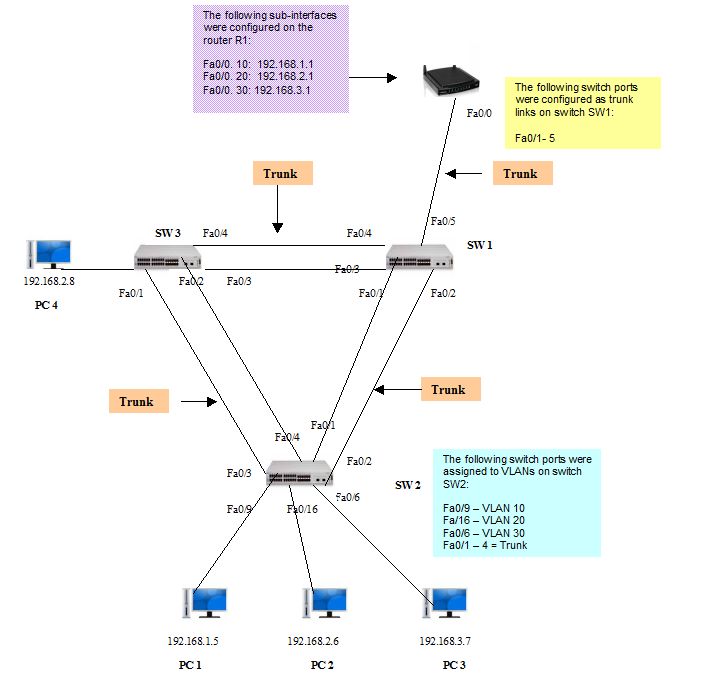What is Router-on-a-stick Inter-VLAN Routing?
Router-on-a-stick is a type of router configuration method in which a single physical interface manages traffic between multiple VLANs on a network. The router interface has to be configured to operate as a trunk link connected to a switch port (SW1) and enabled in trunk mode.
The router receives VLAN-tagged traffic on the trunk interface from the nearby switch SW1 and forwards the routed traffic out to VLAN VLAN-tagged destination using the same interface.
The diagram below shows the router connected and configured with a single interface.

Explanation
i. PC1 on VLAN10 is communicating with PC3 on VLAN30 through router R1 using a single, physical router interface.
ii. PC1 sends its unicast traffic to switch SW2
iii. Switch SW2 then tags the unicast traffic as originating on VLAN10 and forwards the unicast traffic out its trunk link to switch SW1.
iv. Switch SW1 forwards the tagged traffic out the other trunk interface on port F0/5 to the interface on router R1.
v. Router R1 accepts the tagged unicast traffic on VLAN10 and routes it to VLAN30 using its configured subinterfaces.
vi. The unicast traffic is tagged with VLAN30 as it is sent out to the router interface to switch SW1.
vii. Switch SW1 forwards the tagged unicast traffic out of the other trunk link to switch SW2.
viii. Switch SW2 removes the VLAN tag of the unicast frame and forwards the frame out to PC3 on port Fa0/6.
In Summary
Router-on-a-Stick (ROAS) is a technique used to connect a router to a switch using a single physical link and perform IP routing between different VLANs
In a network with multiple VLANs, devices within the same VLAN can communicate directly, but communication between different VLANs requires routing. ROAS allows a single router interface to handle traffic for multiple VLANs.
Topology:
The router interface (usually a subinterface) is logically divided into subinterfaces, each corresponding to a specific VLAN. The switchport connecting to the router is configured as a trunk port, allowing all VLANs to be routed.
How To Configure Router-on-a-Stick Inter-VLAN Routing

